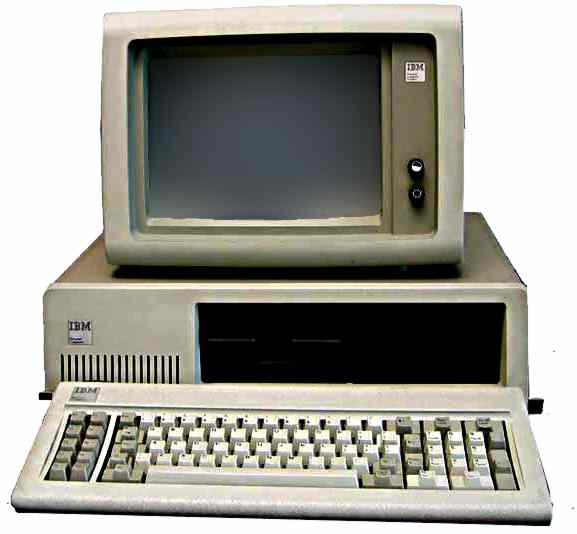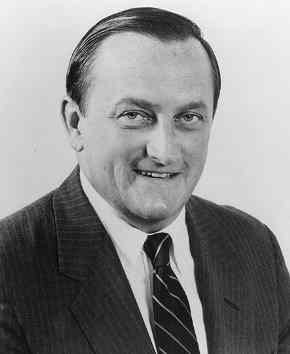| The IBM PC |
Page 1 of 2
Some computers are so beautifully designed that you just know that they are going to be a success - of course you're usually wrong! Technological brilliance and innovation have never been particularly important to the success of a machine. And so it was with the machine that changed the world of computing. A more boring, safe, technologically staid design it is difficult to imagine but the IBM changed everything - even IBM itself was never the same again.
IBM PC Model 5150
The personal computer was an invention of the amateur. An invention designed by high school drop outs, built in garages and sold by idealists who made money almost by accident. In the real world business people and expert computer engineers didn't believe in the microcomputer. They preferred mainframes - and at the time they were more or less right, because the microcomputer was very under powered. But there was also a snobbish attitude of "not made here". The microcomputer companies, like Apple, were all new and the old established companies didn't have anything to do with microcomputers. IBM the oldest, biggest and most profitable of all of the computer companies certainly didn't have any microcomputer products. Microcomputers were something that other people made but it was becoming increasingly clear that there was money to be made from micros and they were a threat to future profits. IBM's first thoughts about the entering the microprocessor market was to buy an existing firm - but only Atari was up for sale and it wasn't number one. Apple, which was number one was definitely not up for sale, so IBM thought hard about building its own machine. But the problem was that IBM as too big to compete in the fast moving world of the micro. Its standard development cycle was 4 years. The same time scale saw most microcomputer companies come from nothing to making a million. IBM chief Frank Cary asked "How do you make an elephant tap dance?" - good question! The answer was an independent business unit. To compete with the fast moving, garage-based entrepreneurs the IBM people would have to go native. IBM, Big Blue, had a corporate culture that suppressed individual thought reinforced by a company song book, a uniform - the blue suit - and, most of all, security. To build a PC you need none of these things.
Bill Lowe Bill Lowe, IBM's lab chief, suggested forming an group who could work outside of IBM's normal framework. He scoured IBM for creative people to form the Project Chess committee in Boca Raton, Florida. The team leader was Jack Sams and he looked at the way that Apple had achieved success. He concluded that open architecture was the key. Let other people know the specification of the machine and let them develop add-ons. This was a very non-IBM way of thinking and IBM would spend many years after the original PC trying to get their technology back - but Sams was right because every time IBM tried to make a PC architecture proprietary the market rejected it. Jack Sams also came up with the notion that another company should produce the system software and he called up the head of a small firm - Bill Gates at Microsoft. Of course we all know what happened next, including the part about Gary Kildall not getting to do CP/M 86 for the machine, but at the time it wasn't so obvious that Project Chess would even be completed let alone be a success. Later in the project the team leader was changed to Don Estridge, a man who got along with Bill Gates very well indeed.
Don Estridge
HardwareThe hardware side of Project Chess was something of an anti- climax. On the other hand it would have been easy for the IBM team to produce something that was either so over engineered that it was too expensive and difficult to use or something so under powered as to be ridiculous. Remember IBM sold a lot of mainframes and had no wish to damage that particular source of cash. IBM chose the new Intel 8088 processor, the 8-bit variant of the full 16-bit 8086 processor. It seems strange now that they were worried that the 8086 might be too powerful! IBM thought about using the Motorola 68000 processor - a much neater and more logical device altogether. It is fun to speculate on what the world would be like if they had gone with it rather than the 8088 - Motorola would have played the role of Intel but who would have been Microsoft? The architecture of the 8088 determined the architecture for the rest of the system. The address space was 1MByte but no-one at IBM could believe that any user would ever need that much in a personal computer and so they made the decision to divide the space up into 604KBytes of user space and 384KBytes for the system. Now, of course, we all know that this was a mistake. The system area was filled with 40KBytes of ROM and the video RAM. If you think that 40KBytes of ROM is a lot you are forgetting that back then it was the tradition to have Basic in ROM and this took 32KBytes leaving 8KBytes for the BIOS. <ASIN:0071358927> <ASIN:1857972880> <ASIN:0201198223> |
|||
| Last Updated ( Friday, 22 May 2020 ) |



